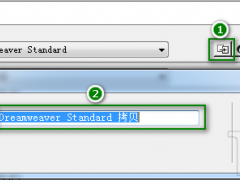这篇文章主要介绍了8个实用的Shell脚本分享,本文给出了判断输入为数字、字符或其他、求平均数、自减输出、在文件中添加前缀、批量测试文件是否存在等实用脚本,需要的朋友可以参考下
几个Shell脚本的例子,觉得还不错。
【例子:001】判断输入为数字,字符或其他
代码如下:
#!/bin/bash
read -p "Enter a number or string here:" input
case $input in
[0-9]) echo -e "Good job, Your input is a numberic! n" ;;
[a-zA-Z]) echo -e "Good job, Your input is a character! n" ;;
*) echo -e "Your input is wrong, input again! n" ;;
esac
【例子:002】求平均数
代码如下:
#!/bin/bash
# Calculate the average of a series of numbers.
SCORE="0"
AVERAGE="0"
SUM="0"
NUM="0"
while true; do
echo -n "Enter your score [0-100%] ('q' for quit): "; read SCORE;
if (("$SCORE" < "0")) || (("$SCORE" > "100")); then
echo "Be serious. Common, try again: "
elif [ "$SCORE" == "q" ]; then
echo "Average rating: $AVERAGE%."
break
else
SUM=$[$SUM + $SCORE]
NUM=$[$NUM + 1]
AVERAGE=$[$SUM / $NUM]
fi
done
echo "Exiting."
【例子:003】自减输出
代码如下:
[scriptname: doit.sh]
while (( $# > 0 ))
do
echo $*
shift
done
/> ./doit.sh a b c d e
a b c d e
b c d e
c d e
d e
e
【例子:004】在文件中添加前缀
代码如下:
# 人名列表
# cat namelist
Jame
Bob
Tom
Jerry
Sherry
Alice
John
# 脚本程序
# cat namelist.sh
#!/bin/bash
for name in $(cat namelist)
do
echo "name= " $name
done
echo "The name is out of namelist file"
# 输出结果
# ./namelist.sh
name= Jame
name= Bob
name= Tom
name= Jerry
name= Sherry
name= Alice
name= John
【例子:005】批量测试文件是否存在
代码如下:
[root@host ~]# cat testfile.sh
#!/bin/bash
for file in test*.sh
do
if [ -f $file ];then
echo "$file existed."
fi
done
[root@host ~]# ./testfile.sh
test.sh existed.
test1.sh existed.
test2.sh existed.
test3.sh existed.
test4.sh existed.
test5.sh existed.
test78.sh existed.
test_dev_null.sh existed.
testfile.sh existed.
【例子:005】用指定大小文件填充硬盘
代码如下:
[root@host ~]# df -ih /tmp
Filesystem Inodes IUsed IFree IUse% Mounted on
/dev/mapper/vg00-lvol5
1000K 3.8K 997K 1% /tmp
[root@host ~]# cat cover_disk.sh
#!/bin/env bash
counter=0
max=3800
remainder=0
while true
do
((counter=counter+1))
if [ ${#counter} -gt $max ];then
break
fi
((remainder=counter%1000))
if [ $remainder -eq 0 ];then
echo -e "counter=$countertdate=" $(date)
fi
mkdir -p /tmp/temp
cat < testfile > "/tmp/temp/myfile.$counter"
if [ $? -ne 0 ];then
echo "Failed to write file to Disk."
exit 1
fi
done
echo "Done!"
[root@host ~]# ./cover_disk.sh
counter=1000 date= Wed Sep 10 09:20:39 HKT 2014
counter=2000 date= Wed Sep 10 09:20:48 HKT 2014
counter=3000 date= Wed Sep 10 09:20:56 HKT 2014
cat: write error: No space left on device
Failed to write file to Disk.
dd if=/dev/zero of=testfile bs=1M count=1
【例子:006】通过遍历的方法读取配置文件
代码如下:
[root@host ~]# cat hosts.allow
127.0.0.1
127.0.0.2
127.0.0.3
127.0.0.4
127.0.0.5
127.0.0.6
127.0.0.7
127.0.0.8
127.0.0.9
[root@host ~]# cat readlines.sh
#!/bin/env bash
i=0
while read LINE;do
hosts_allow[$i]=$LINE
((i++))
done < hosts.allow
for ((i=1;i<=${#hosts_allow[@]};i++)); do
echo ${hosts_allow[$i]}
done
echo "Done"
[root@host ~]# ./readlines.sh
127.0.0.2
127.0.0.3
127.0.0.4
127.0.0.5
127.0.0.6
127.0.0.7
127.0.0.8
127.0.0.9
Done
【例子:007】简单正则表达式应用
代码如下:
[root@host ~]# cat regex.sh
#!/bin/env sh
#Filename: regex.sh
regex="[A-Za-z0-9]{6}"
if [[ $1 =~ $regex ]]
then
num=$1
echo $num
else
echo "Invalid entry"
exit 1
fi
[root@host ~]# ./regex.sh 123abc
123abc
#!/bin/env bash
#Filename: validint.sh
validint(){
ret=`echo $1 | awk '{start = match($1,/^-?[0-9]+$/);if (start == 0) print "1";else print "0"}'`
return $ret
}
validint $1
if [ $? -ne 0 ]; then
echo "Wrong Entry"
exit 1
else
echo "OK! Input number is:" $1
fi
【例子:008】简单的按日期备份文件
代码如下:
#!/bin/bash
NOW=$(date +"%m-%d-%Y") # 当前日期
FILE="backup.$NOW.tar.gz" # 备份文件
echo "Backing up data to /tmp/backup.$NOW.tar.gz file, please wait..." #打印信息
tar xcvf /tmp/backup.$NOW.tar.gz /home/ /etc/ /var # 同时备份多个文件到指定的tar压缩文件中
echo "Done..."















